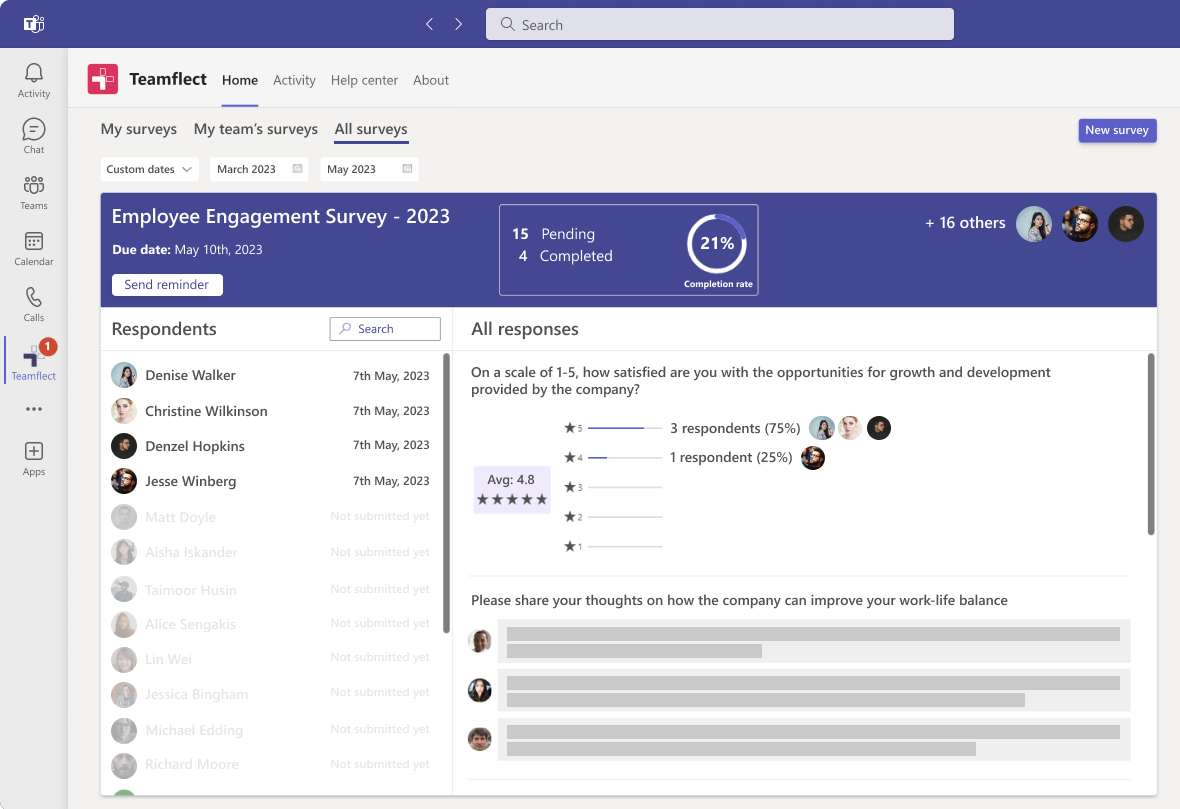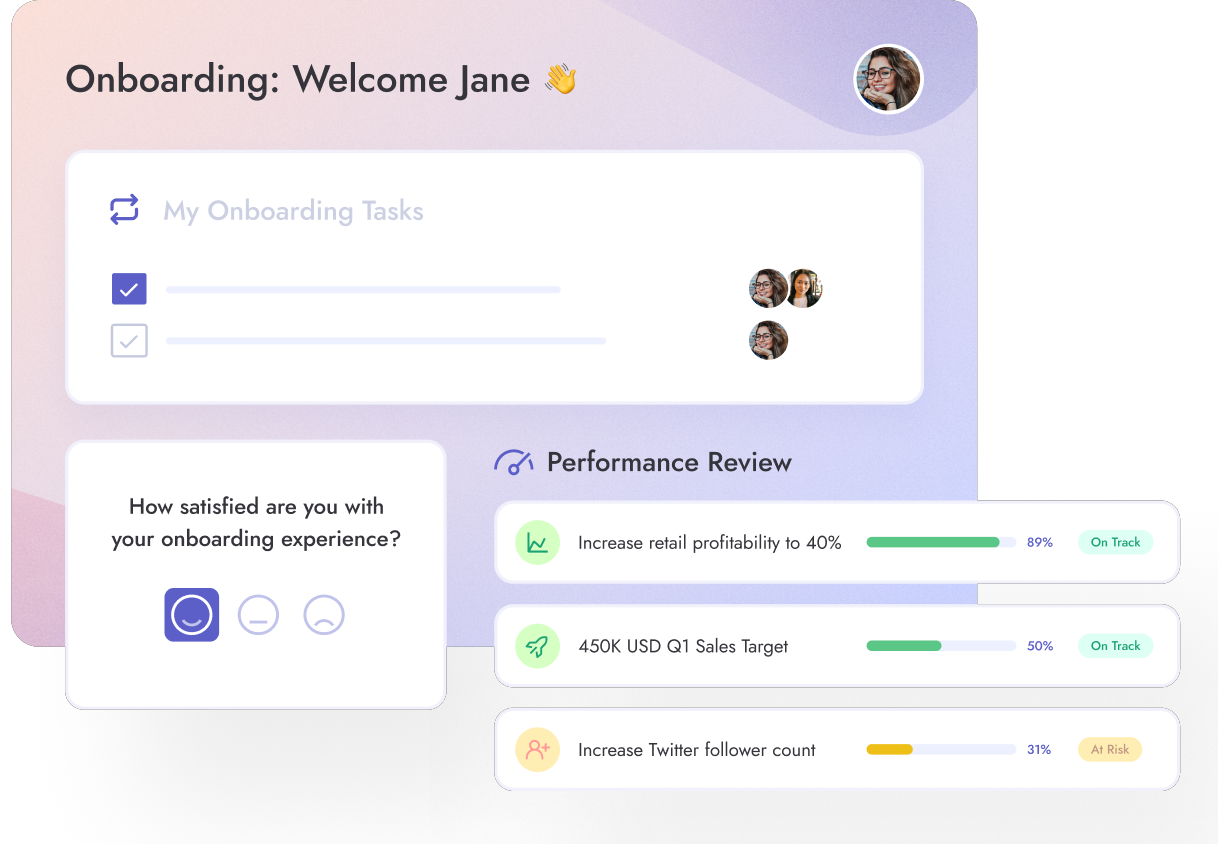Employee turnover rate is one of the key metrics in measuring the success of an organization. In an era where employee retention is both truly the name of the game, and incredibly difficult to achieve, keeping the employee turnover rates low may prove to be the difference maker in the success of an organization.
At the end of the day, which one would you rather be conducting; stay interviews or exit interviews?
The discussion of employee turnover is one of the most nuanced topics in the world of human resources and performance management. So in this entry to our blog, we will be covering this very nuanced discussion surrounding employee turnover rates.
We will be covering the basics of employee turnover rates, as well as how you can calculate your employee turnover rate. We will then be taking a dive into some useful employee turnover rate statistics, the reasons behind high employee turnover rates, and of course how you can lower employee turnover rates in your organization.
So without further ado, let’s dive right in!
Table of Contents
Understanding The Employee Turnover Rate
So…What is employee turnover rate? Well, in simple terms, it’s a metric that tells you how many employees have left your company during a specific period, usually within a year. Think of it as a vital sign for your workforce. Understanding this rate helps you gauge the overall health of your organization.
Distinguishing Between Voluntary and Involuntary Turnover
Not all turnover is created equal. It’s essential to differentiate between two primary types:
- Voluntary Turnover: This type occurs when employees make the decision to leave the company on their own terms. They may be seeking new opportunities, a change in career direction, or a better work-life balance.
- Involuntary Turnover: On the other hand, involuntary turnover takes place when employees are separated from the company due to factors beyond their control. This can include layoffs, performance issues, or organizational restructuring.
Significance of Addressing High Turnover
Each member of your team is an investment. From the initial moment of recruiting, throughout the onboarding process, and into day-to-day responsibilities, organizations constantly invest in their employees. Whether this investment is in the form of salary, benefits, training, or simple know-how, once the employee leaves, it is gone.
When your company becomes a revolving door for employees, you are constantly flushing those investments down the drain. Not only is this a loss of resources but also a massive amount of untapped potential going to waste.
Whether you are losing the investment you make in your employees through voluntary turnover or involuntary turnover, you should always consider just who those departing employees could have grown into.
Calculating Employee Turnover Rate
Oddly enough, calculating the rate itself is the simplest part of the entire process. In fact, it is one of the easiest equations you will find at work. The following data is all you need!
Number of Employees who Left: This refers to the total number of employees who voluntarily resigned or were terminated during a specific period. Be sure to include both full-time and part-time employees in this count.
Average Number of Employees: This one requires a bit more math. To find the average, add up the total number of employees at the beginning and end of the period you’re measuring, and then divide it by two. This ensures a more accurate representation of your workforce during that time frame.
So… What is the mighty formula you’ll be plugging these datasets into? Here it is:
Turnover Rate = (Number of Employees who Left ÷ Average Number of Employees) x 100
Interpreting the turnover rate is crucial in determining its impact on your organization. A high rate may indicate potential issues with employee satisfaction, work environment, or company culture. Conversely, a low rate can be a positive sign of a happy and engaged workforce.
What is a healthy turnover rate?
A healthy turnover rate is one that strikes a balance between employee retention and turnover. While a turnover rate of zero is unrealistic and not advisable, having too high of a turnover rate can be detrimental to an organization’s stability and productivity.
The ideal turnover rate can vary based on factors such as industry, location, and the specific circumstances of the organization. However, a generally accepted benchmark for a healthy turnover rate is often considered to be somewhere below %10.
That being said, it goes without saying that this number depends on your organization and a million other variables.
Reasons Behind High Employee Turnover

Employee turnover can be a complex puzzle, influenced by a myriad of factors that differ from one organization to another. As employers, it’s crucial to explore these reasons in detail to gain deeper insights into the drivers behind employee departures.
As is the case with any critical issue, it is impossible to solve the problem without identifying the reason behind it. The employee retention strategy you need to implement should depend on the main cause of employee turnover in your organization.
1. Lack of Growth and Advancement Opportunities
One of the most significant reasons for employee turnover is the perceived lack of growth and advancement within the organization. Remember what we discussed at the beginning of this article about investments?
If your employees feel like they are not being invested in, then they just might look for greener pastures in other organizations.
As humans, we have an inherent desire to learn, develop new skills, and take on new challenges. While employee loyalty is key, it is important to remember that your employees are loyal first and foremost, to themselves. Organizations that fail to understand this often find themselves losing valuable talent.
2. Inadequate Compensation and Benefits
No matter how many times you repeat the words “We are a family.” during the company retreat, the main reason your employees work for you will never change. They are here for the money!
There is no greater incentive to stay than a decent paycheck as there is no greater incentive not to than an inadequate one.
If your organization’s compensation packages are not competitive within the industry or fail to align with the cost of living, can your employees really be blamed for wanting to look for opportunities elsewhere?
3. Poor Work-Life Balance
A lack of work-life balance is one of the core reasons for employee burnout! If your employees don’t feel like that balance is intact, then they will surely be disengaged. Here is a fun fact about disengaged employees.
If they aren’t quiet quitting, then they are very much really quitting!
A company culture that demands excessive working hours, promotes burnout, or lacks flexibility can lead to high turnover rates. In fact, if you were to make a “Toxic Workplace Checklist” then you could very easily list all of those in it!
4. Ineffective Leadership and Management
The famous saying, “People don’t leave jobs; they leave managers,” holds more than a grain of truth. The relationship an employee has with their immediate supervisor plays a pivotal role in their job satisfaction.
While toxic managers who can’t take constructive feedback are doomed to lose their employees one way or another, strong leaders who promote a culture of recognition and offer positive feedback are definitely likely to retain their employees.
5. Lack of Recognition and Appreciation
Feeling valued and appreciated is a fundamental human need that extends to the workplace. A lack of recognition can lead to disengagement and ultimately push employees to seek appreciation in a different organization that recognizes their contributions.
6. Workforce Diversity and Inclusion Issues
Diversity and inclusion are more than just buzzwords. Diversity management is one of the core leadership practices of our time. Employees want to work in an environment where they feel valued and included, regardless of their background. i
A lack of diversity and inclusion initiatives within the organization can lead to employee dissatisfaction and attrition, particularly if employees feel their perspectives and identities are not respected.
In order to retain your employees and promote a diverse organizational culture, you might want to invest in HR initiatives that promote diversity in the workplace.
How to Lower Employee Turnover Rate in 4 Easy Steps
We answered the “What?” and we answered the “Why?”. Now it is time for our favorite: “How?!”. You didn’t think that we would talk a big game about the importance of keeping employee turnover rates low without telling you how exactly you can lower turnover rates did you?
Follow the four steps we’ve highlighted here and you will keep those turnover rates low!
Improving the Hiring Process
Believe it or not, keeping employee turnover rates low starts at the very beginning of the recruitment process. After all, if you invest in the right individual, you won’t have to invest in someone else again!
Define Clear Job Expectations: During the hiring process, ensure that job descriptions clearly outline the roles and responsibilities of the position. This way, candidates have a realistic view of what the job entails, reducing the risk of role mismatch and subsequent turnover.
Behavioral Interviews: Utilize behavioral-based interviews to assess candidates’ past experiences and actions in various work scenarios. This approach helps identify individuals whose values and behavior align with the company’s culture, increasing the chances of a successful fit.
Cultural Fit Assessment: While skills and qualifications are crucial, assessing a candidate’s cultural fit within your organization is equally important. An employee who aligns with your values and mission is more likely to stay committed for the long haul.
Enhancing Employee Onboarding
What always follows hiring? Onboarding! The environment you create while onboarding new hires plays a massive role in whether those new hires will be staying with you in the long run!
Structured Onboarding Program: Implement a well-structured, effective onboarding process that spans the first few weeks or months of a new employee’s tenure. A thoughtful onboarding program provides essential training, introduces them to company culture, and helps them integrate into their teams seamlessly.
Assign a Buddy or Mentor: Pair new employees with experienced team members who can act as buddies or mentors. The buddy/mentor system offers a support system and fosters a sense of belonging, making the transition smoother and more enjoyable.
Feedback and Check-ins: Regularly check in with new hires during their onboarding period. Encourage open communication to address any concerns they may have and ensure they feel valued from the start.
Use Onboarding Software: Whether you are a fully remote or conventional organization, employee onboarding isn’t a simple process to follow. Even if you do everything on the onboarding checklist, you might find yourself overwhelmed with managing the whole process. Employee onboarding software is the best way to keep remote hires engaged in the long run!
Here are some of the best onboarding tools you can choose from: 14 Best Onboarding Software
If, however, your organization uses Microsoft Teams on a daily basis, then the best onboarding software for you is….
Teamflect

Teamflect is the best employee onboarding software for Teams users. Teamflect’s complete Microsoft Teams integration lets users:
- Create automated onboarding tasks.
- Conduct employee onboarding surveys.
- Conduct 30-60-90-day reviews with customizable performance review templates.
- Create mentorship and buddy programs.
- And do so much more!
Without ever having to leave the comfort of Microsoft Teams!



